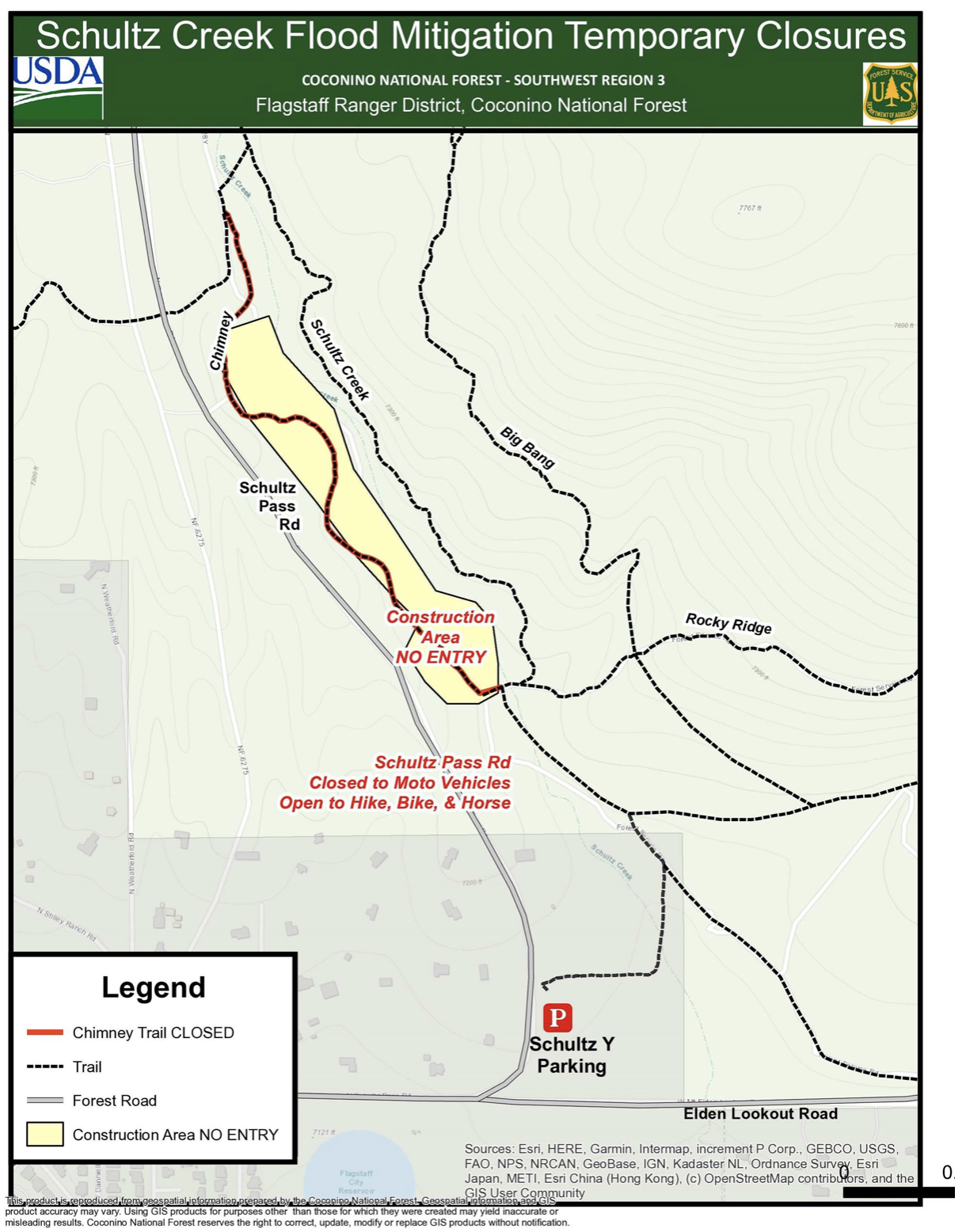 COCONINO COUNTY — The Coconino County Flood Control District and the Coconino National Forest will begin the first phase of watershed restoration project in Schultz Creek this spring.
COCONINO COUNTY — The Coconino County Flood Control District and the Coconino National Forest will begin the first phase of watershed restoration project in Schultz Creek this spring.
This watershed restoration project is an effort to respond to post-fire flooding caused by the 2022 Pipeline Fire, which damaged the Schultz Creek watershed, dramatically increasing levels of flow and erosion in Schultz Creek, which overwhelmed downstream stormwater infrastructure in the City of Flagstaff. The Coconino County Flood Control District (the District) will begin the project the week of May 22, and the first phase of construction is expected to run through June.
“The Coconino County Flood Control District is committed to mitigating the impacts of post-fire flooding on our communities through watershed restoration and flood mitigation,” said Patrice Horstman, Flood Control District Chair and District 1 Supervisor. “On-forest watershed restoration, like what is being constructed in Schultz Creek watershed is the game changer that reduces the impact of sediment and debris overwhelming downstream stormwater systems,” shared Lucinda Andreani, Flood Control District Administrator.
During construction, Schultz Pass Road beyond the Coconino National Forest boundary will close to motorized vehicles but remain open to hiking, biking and equestrian use. Approximately a half-mile of the Chimney Trail north of the “Schultz Y” will also be closed to all users. Please see the attached construction map for more clarity. Residents and recreationists in the area should exercise caution while near the construction area as there will be heavy machinery present in the forest and on the roadways.
“We understand the importance of this project to the community,” said Nick Mustoe, Coconino National Forest Deputy District Ranger. “The Flagstaff Ranger District has been engaged with the District and partners on mitigation efforts since last summer. It means a lot to my staff that we’re ready to get the work on the ground before this year’s monsoon season.”
The District has contracted with Natural Channel Design to build structures – referred to as “Plug and Spread” features – designed to reduce levels of stream sediment and erosion by slowing and spreading floodwater. These features will perform a similar function to the alluvial fan restoration that has been implemented with success in other watershed restoration projects within the Museum and Schultz fire burn scars. “Plug and Spread” is minimally invasive and takes advantage of existing creek bed contours to slow and spread floodwaters while reducing impact on the natural topography and foliage.
In turn, these features will allow the City of Flagstaff’s new detention facility, located at the confluence of Schultz Pass Road and Mt. Elden Lookout Road (also known as the “Schultz Y”), to function more effectively.
“This is an important recreation area for the ranger district,” Mustoe added. “We made sure from the start of this project that the design minimized the impact to trails and maintained the integrity of the area. I’m confident that the proposed work takes those concerns into account.”
“We appreciate the hard work Natural Channel Design has put into engineering a project that will support this vital need with minimal impacts to the highly utilized Schultz Creek landscape, and we appreciate the Flagstaff community for their patience and understanding as we work to deliver a timely and effective sediment reduction project,” Andreani added.
Phase 2 of the restoration of the Schultz Creek watershed will take place in late 2023. It will involve erosion reduction measures further up in the watershed that are acting as a significant source o sediment for downstream flows. The restoration of the Schultz Creek watershed is estimated to cost upwards of $5.4 million. Funding for the project is being provided by the U.S. Forest Service via Congressionally-approved funds.
